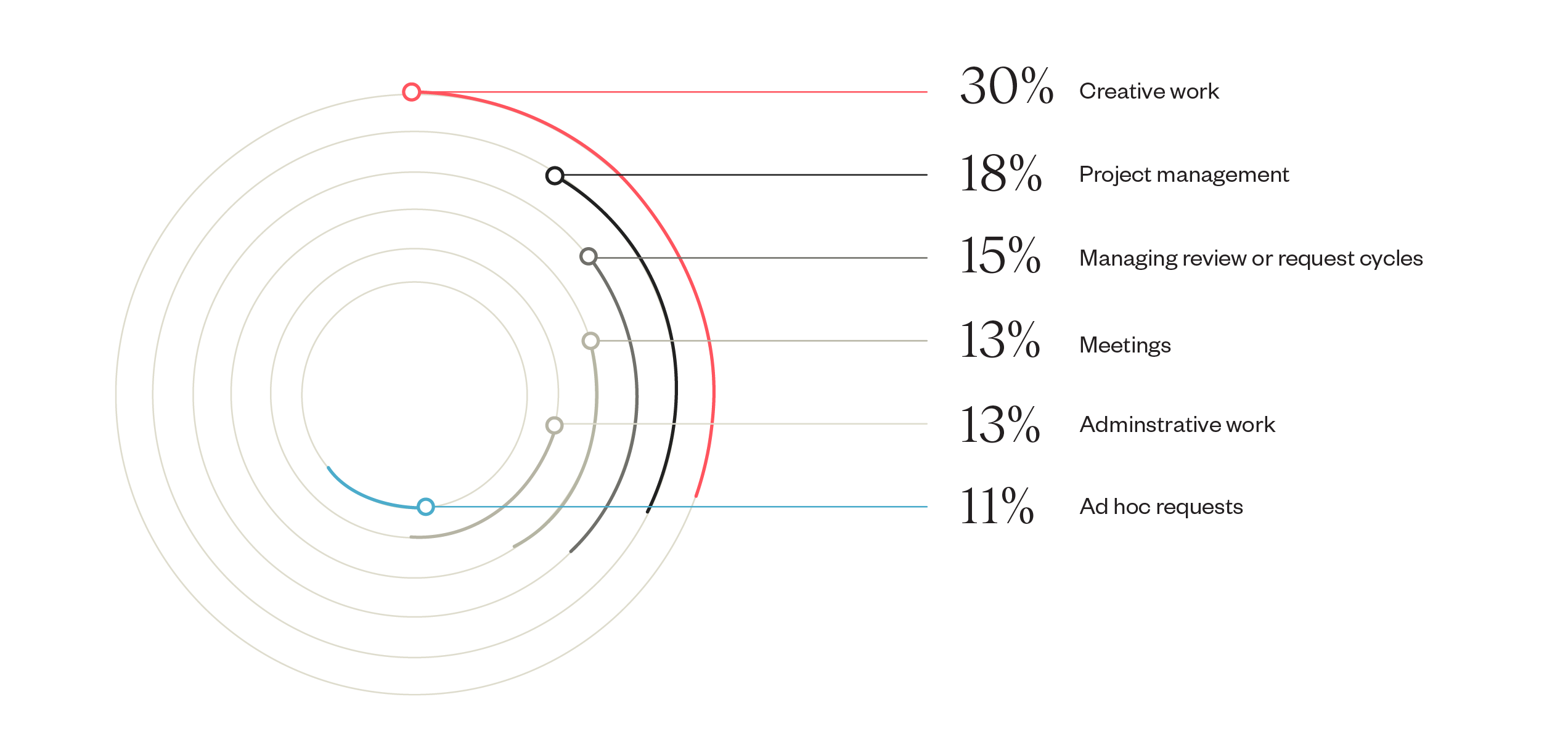
Optimizing Digital Content Planning, Production and Delivery with Adobe’s Content Supply Chain Solution


As digital marketing requires more content that’s relevant to personas and journey stages, marketing leaders and content creators face two major challenges. The first is simply creating enough high-quality content to keep up with demand for personalized experience at scale, as the number of platforms, formats, and customer touchpoints continues to expand.
The second challenge is clearing the technological hurdles that impede efficient content creation, delivery, and measurement. These hurdles include fragmented technologies and siloed data that result in content creators spending 70% of their work time managing, sharing, and communicating about content, rather than actually creating it. Freeing up this time can help marketing teams create more content, more efficiently.

Source: Adobe, The future of creative experiences.
To help marketing teams address these issues, Adobe launched its Content Supply Chain solution. Adobe Content Supply Chain integrates Adobe Experience Cloud and Adobe Creative Cloud with additional tools such as Adobe Sensei GenAI, Adobe Firefly, Adobe Workfront, and Adobe Experience Manager to streamline and optimize content marketing from planning through production to delivery and measurement.
Planning with Content Supply Chain
Many content teams still plan out of their email inboxes or distribution lists, which makes it difficult to create a consistently visible request queue with clear priorities based on portfolio goals. By contrast, the content supply chain approach starts with Adobe Workfront receiving standardized intake content creation requests. A marketing or creative operations traffic coordinator then assigns those requests based on data gathered during the intake process that enables smarter decisions about who should do the work and what its priority level is. Teams can standardize content delivery types in Workfront as well, so it’s easy to create project templates with task lists and attach them to assignments at the planning stage. This approach is especially useful for quick turnaround projects like reactive social content, and it allows for visibility across all assignments and priorities.
Digital Content Production
When Adobe Workfront is integrated with Adobe Experience Cloud products and other tools in the Adobe ecosystem, creatives can build their content in the relevant connected Adobe application. Experience Cloud also allows creators to easily build digital experiences across multiple web channels for consistency and efficiency.
The native integrations between Adobe Workfront, Experience Manager, and Creative Cloud enables each persona involved in the creative process to work in their respective tool. For example, a Project Manager can assign a task to a designer in Workfront. The designer can view their upcoming tasks, initiate review and approval tasks and sync final assets to Workfront and/or AEM all without ever having to leave Photoshop.
Because all of the tools are integrated, teams can push content from Workfront into those creative tools and vice versa. That creates a true ecosystem that encompasses the ideation phase in Workfront, production with Adobe’s creative tools, and Workfront for managing the work that goes into content production, all without resorting to email or standalone solutions like time trackers.
Content Delivery and Measurement
With the final assets stored in Adobe Experience Manager, marketers can easily build and deliver digital experiences across multiple web channels for consistency and efficiency. At the end of the content supply chain, Adobe has the delivery mechanisms to serve all of your downstream marketing channels, along with powerful analytics tools that allow you to track assets within those channels.
For example, Adobe Analytics allows tag CTAs on your website, so you can track the conversion rate. Because every stage of the content supply chain occurs within an integrated Adobe ecosystem, this tracking allows for more accurate and comprehensive marketing ROI assessment, including time spent per asset as well as asset performance.
Rightpoint + Adobe Content Supply Chain
Adobe Content Supply Chain reduces time pressure on content marketing teams by removing barriers to efficiency and communication. Rightpoint has the Adobe Experience Cloud and Adobe Creative Cloud integration experience to accelerate and optimize the construction of a digital content supply chain that meets your organization’s unique needs. Download our brochure to learn more about our Adobe Content Supply Chain offering.
Download the Brochure

